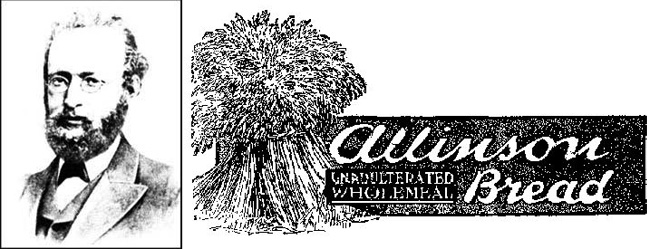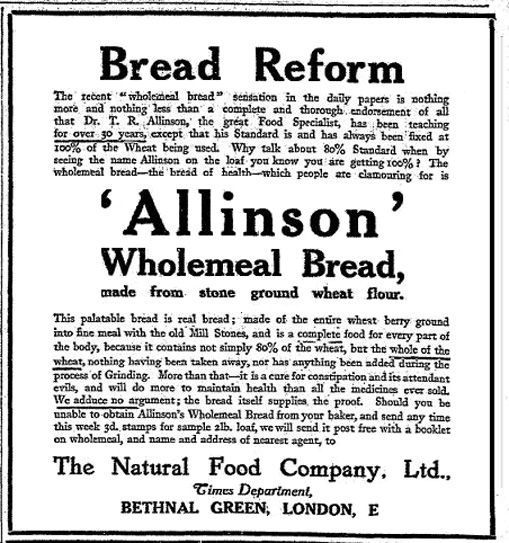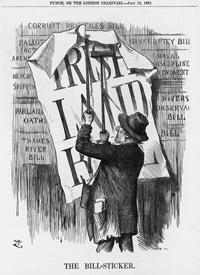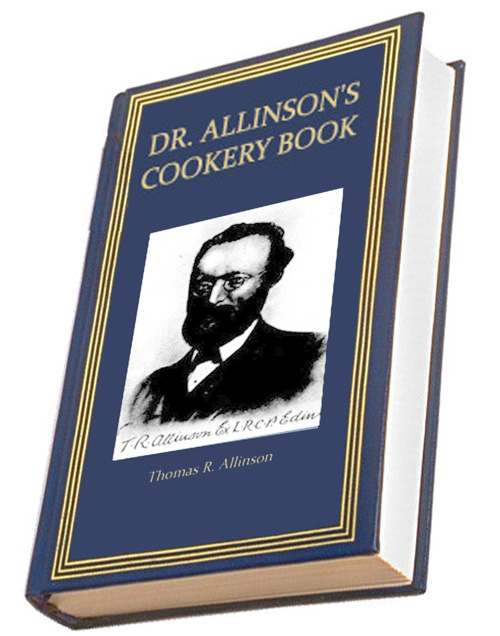Share This
While much of the world has been looking ahead this month with predictions for 2015, I’ve been spending the first weeks of the new year looking backward, while reading the fascinating book How to Be a Victorian by Ruth Goodman – a scholar and long-term re-enactor who has lived for months at a time in voluminous skirts, cooking over coal and using the privy
In the course of talking about Victorian foodways, Ms. Goodman mentioned that many poor people during this period lived largely on bread – and that their health therefore plummeted when white flour largely replaced wholemeal (whole wheat) flour in the last quarter of the nineteenth century. One man, Dr. Thomas Allinson, was whole-grain-savvy way ahead of his times, and fought back against the popularity of white bread.
Intrigued, I took it upon myself to learn more about Dr. Allinson. Thomas Allinson was born in 1858 and became qualified as a doctor when he was just 21. He took an early interest in the interplay of nutrition and health and established a medical practice in London with an emphasis on the benefits of exercise, fresh air, vegetarianism and “wholemeal” bread. In 1889, he even wrote a book called The Advantage of Wholemeal Bread.
Allinson’s views were considered quite radical in those times. In addition to promoting nutrition and exercise, he also campaigned against the common use of toxic drugs – opium, morphine and cocaine were popular ingredients in tonics prescribed by many doctors – and believed that smoking caused cancer, a wild and crazy idea.
Dr. Allinson was so outside the medical mainstream, in fact, that he was struck off the medical register in 1892 – tantamount to losing his medical license. (He continued his controversial ways, publishing his Book for Married Women in 1894, in which he advocated equality between the sexes and birth control, for which he was convicted under the Obscene Publications Act in 1901.)
By now you’re impatiently saying to yourself, “Sure, this guy’s interesting, but isn’t this a whole grains blog? Let’s get back to the whole grains part of the story!” With the medical and legal community on his back, Allinson bought a grist mill in 1892, to sell whole grain flour; later he opened a bakery and branched out into selling all manner of health foods.
In 1915, just three years before his death, Thomas Allinson published Dr. Allinson’s Cookery Book, Comprising Many Valuable Vegetarian Recipes – a great number of which call for flour from his mill, bread from his bakery or other products from Allinsons National Food Company Ltd.
Want to try cooking some Barley Bannocks, Bread Soup, or wholemeal Doughnuts yourself? You can read Dr. Allinson’s Cookery Book for free on Project Gutenberg’s website.
Beyond the recipes, the text of this book is pretty cool too. Allinson launches right into “the advantages of wholemeal bread,” writing:
People are now concerning themselves about the foods they eat, and inquiring into their properties, composition, and suitability. One food that is now receiving a good deal of attention is bread, and we ought to be sure that this is of the best kind, for as a nation we eat daily a pound of it per head. We consume more of this article of food than of any other, and this is as it ought to be, for bread is the staff of life, and many of the other things we eat are garnishings. It is said we cannot live on bread alone, but this is untrue if the loaf is a proper one; at one time our prisoners were fed on it alone, and the peasantry of many countries live on very little else.
A pound of bread a day? At least. At one point in his book, Allinson gives sample meals; for “a man in full work” he recommends 6 to 10 ounces of wholemeal bread at breakfast, another 12 to 16 ounces at mid-day, and then a light supper with only 4-6 ounces of bread. When you realize what vast quantities of bread were considered normal, you realize why the quality of the bread mattered so vitally.
Dr. Allinson goes on to praise the ease of using wholemeal for every kind of cooking, and the benefits of doing so:
Most of my readers have received great benefit from eating wholemeal bread instead of white, and they may all gain further good if they will use Allinson wholemeal flour in place of white for all cooking purposes. Those who are at all constipated, or who suffer from piles, varicose veins, varicocele, back pain, &c., should never use white flour in cooking. Those who are inclined to stoutness should use wholemeal flour rather than white. Hygienists and health-reformers should not permit white flour to enter their houses, unless it is to make bill-stickers’ paste or some like stuff.
All good reasons to switch to whole grains. But wait! Dr. Allinson has one more reason up his sleeve, as he concludes:
…wholemeal bread must be best for our daily use. That such is the case, evidence on every side shows; those who eat it are healthier, stronger, and more cheerful than those who do not, all other things being equal.
Cheerfulness! I haven’t read any peer-reviewed studies that show I’ll be more cheerful if I eat whole grains, but I’m willing to give it the benefit of the doubt. I do know that reading about Dr. Allinson, and scanning through his recipes (and the fun, self-serving ads at the end of the book) have made me more cheerful!
Take a look for yourself, and if you make any of the recipes in this 100 year old cookbook, write and tell us how they came out. (Cynthia)






Add a Comment